[What follows are chapter excerpts from Werewolves in Film and Literature, an unpublished book written by Dr. Stefan Crosscoe, discovered among his papers after his disappearance the night of February 19, 2019. It’s unclear if the presence of a full moon that night has any relevance to his unknown fate.]
Introduction: Pale Moon Rising
Where Shall I begin my tale? This one has neither beginning nor end, but only a perpetual unfolding, a multi-petaled blossom of strange botany.
–The Werewolf of Paris (1932)
In the classic cinematic incarnation of the werewolf myth, Universal Pictures’ The Wolf Man (1941), Larry Talbot, the conflicted and remorseful werewolf of the title, stalks his victim from tree to tree in a foggy, moonlit night. It’s an appropriate image for someone making their way into the Lost Forest of the werewolf genre. The forest is deep, full of lurking dangers and traps, and only the brave few can make their way through it without falling prey to the beast.
I’ll assume that someone picking up this book wants some guidance, a Virgil into a wolfish underworld. As with the vampire mythos, the werewolf has been reimagined multiple times for every generation since the advent of film itself. And while the werewolf has fewer successful adaptations than the vampire, it has far more than its share of failures and strange interpretations. Often the culprit is that centerpiece of every werewolf movie: the transformation. Beyond ranking and grading the films themselves, they can be organized by the success or failure of the “turning.”
The viewer often has the impression that, especially for the lower budget pictures, the choice had to be made between special effects on the one hand and the acting, writing and set design on the other. The result is sometimes poor films in all respects but with wonderfully realized monsters, for example, the werewolf segment of Waxwork (1988). On the other end are superbly acted and written films with the most basic makeup poorly applied, like the Mike Nichols film Wolf (1994). The best films do both and the failures do neither, although some do neither with enough character and spirit that all is forgiven, like Howling II: Your Sister is a Werewolf (1985).
Chapter 1: The First Bite
Even a man who is pure in heart,
and says his prayers by night,
may become a wolf when the wolfsbane blooms,
and the autumn moon is bright.
–The Wolf Man (1941)
The year 1981 was a special one for werewolf movies. It saw the release of both John Landis’ An American Werewolf in London and Joe Dante’s The Howling. Both sit atop any list of essential werewolf films, trading for the top spot dependent on the lister’s taste like Citizen Kane and The Godfather on mainstream lists. Both pictures are helmed by fantastic directors who know how to use humor in the right doses to accentuate the horror. Landis, who directed Animal House, Trading Places and The Three Amigos, actually crafted American Werewolf as a horror-comedy.
The Howling, though darker, still plays for laughs in many scenes—not surprising since it comes from Dante, who also gave us Gremlins a few years later. Both movies also feature set-piece, show-stopping transformations, particularly Rick Baker’s makeup in American Werewolf. A comparison of the two films illustrates the flexibility of the Werewolf genre. Each uses traditional tropes like silver, pentagrams, and the moon, but both introduce original elements like American Werewolf’s rotting specters which haunt the wolf, or Howling’s colony of lycanthropes who can change at will.

The werewolf film is a strange flower, with roots that branch deep into our prehistory, into pagan soil. Vampires are only night creatures because they fear the light. The werewolf is tied to the moon like the tides. The vampire fears the cross, holy water, and the stake, products of man’s civilization. The werewolf fears silver pulled from the deep, wolfsbane and the shadow of the ash tree. The vampire in film is in control of its power, stands away from man in its pride, hunts us as food and for entertainment.
But the werewolf in film is not only feared and despised by society, but it is also ashamed and hateful of itself, an outcast that wishes it could cast away the mark of the beast. We’ll save for later chapters a detailed discussion of several of these tropes. But to create a comprehensive ‘must-see’ list for werewolf cinema is difficult if not impossible and depends on taste and age of the viewer. It’s possible to build whole lists of movies that have very little similarity in tone, gore, aesthetic, or fright and yet are all still something we choose to call a “werewolf movie.” I love Teen Wolf (1985), Bad Moon (1996), and Ginger Snaps (2000) but to put them on the same list seems arbitrary. [Editor’s note: The author attached a Top Ten list as an appendix to this found manuscript, included below for those interested.]
So, I offer just these two movies (An American Werewolf in London, The Howling) as the only ‘must-see list’ that makes any reasonable sense. These are certainly not the only good or great werewolf movies. We’ll discuss many more in the course of this book, but these two, as examples of a particular year, in a particular genre, eliminate enough variables to allow an uninitiated viewer to have a basic idea of what is meant by a “good” werewolf film.
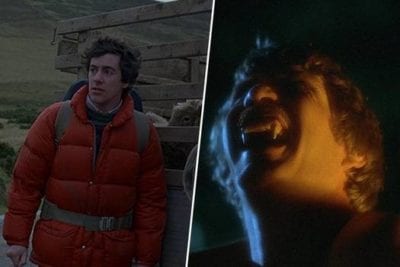
Chapter 2: The Wolf as Universal Archetype
Even a man who is pure in heart,
and says his prayers by night,
may become a wolf when the wolfsbane blooms,
and the moon is full and bright.
–House of Frankenstein (1944)
Lon Chaney Jr. is the most famous but he was not the first. Henry Hull in 1935 was the first Universal Wolfman in Werewolf of London, a title referenced in Warren Zevon’s song “Werewolf of London” and the previously discussed An American Werewolf in London. The Wolf Man came six years later. Both movies featured the makeup of Jack Pierce, who tried to use his more famous design in the earlier film but it was rejected as too costly. In 1944, Bela Lugosi resumed his role as Dracula in Return of the Vampire (1944), featuring a werewolf assistant who remembers his humanity when he finds a crucifix and drags the vampire into the light killing him.
1946 gave us She-wolf of London, which is not an actual werewolf movie, but about a mentally ill woman tricked into believing she is one. Lon Chaney appears in several more films as Larry Talbot, THE Wolf Man, starting with 1943’s Frankenstein Meets the Wolfman. This is the first werewolf film to tie the transformation into the wolf directly to exposure to moonlight, not just the lunar calendar. This early crossover was followed by a slate of “monster-rally” style pictures. Starting with 1944’s House of Frankenstein, which featured the mad scientist, the hunchback, Dracula, Frankenstein and the werewolf. In 1945 we got the sequel, House of Dracula, which again features the unholy trinity of the Dracula, Frankenstein and Wolf Man. It’s an odd movie on all counts featuring attempts by Dracula and the Wolf Man to cure themselves of their affliction using mold-spores. The Universal Werewolf ended in the same place as most of the classic monsters in the 1948 film Abbot and Costello Meet Frankenstein, a funny movie but not the most interesting for our purposes as everything is played for slapstick laughs.

That gives us a timeline, but it’s not an understanding of what makes the Universal Wolf Man. Or to ask it another way, what do the Universal Pictures make of the werewolf? If you watch just these wolf movies, you’ll get plenty of the expected, silver in bullet and other forms are there, the moon, always beautiful as shot on black and white film. The werewolf form is still predominately humanoid, it looks like a hairy man with claws, later in film history as special effects improved, the beast starts to dominate more as the human form recedes. But there are less discussed aspects that we will give more attention to in their own chapter.
Botany and plants are a major presence in most of these films. From the very start, Werewolf of London features a botanist werewolf growing a rare Tibetan plant to cure his affliction to the monster-mash films like House of Dracula where the monsters seek out a botanist for a plant-based cure. And the base test for any werewolf aficionado has to be memorization of the poem from Wolf Man, quoted at the beginning of this book, tying the transformation to the blooming of wolfsbane. In the end, the Universal wolf encompasses the driving emotion of the werewolf: regret. Lon Cheney’s werewolf sees his powers as a curse, an affliction, something of which they would be rid. They are half in the human world and half in the monster and their sadness is…
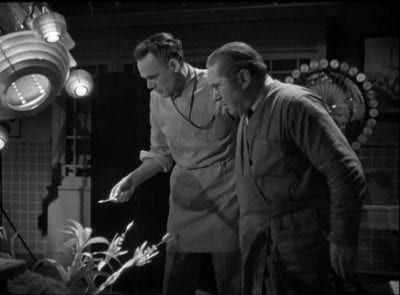
Chapter 3: Howling Every Since the World Began
Some things never change,
Some things just stay the same.
Waiting.
And the forest looks so green again,
And I worship, at your feet again,
Howling!
–”The Howling by Babel” from the Howling II soundtrack
No other series of movies epitomize the diversity, the varying quality, and the divergent tones of the werewolf genre like the Howling franchise. If you just watched the eight movies in this series, you’d be forgiven if you had no real idea what the hell being a werewolf was all about. In fact, except for a confusing attempt at continuity in the second film, none of the sequels have anything to do with the original. Even in Howling II: Your Sister is a Werewolf (1985) unless you are really familiar with the first movie, you’d have no idea from the acting, direction, or tone that it was intended as a direct sequel. It even changes the mythology from silver to titanium for no real purpose or effect. That is said not to steer you away from part 2. Watch it. I may have seen it more times than any werewolf movie. It does everything so badly that it circles back around to greatness, like the best Ed Wood movies.
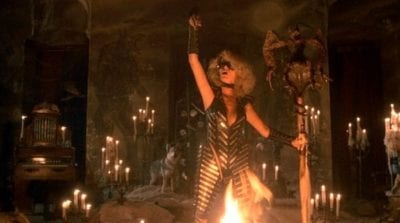
Howling 3: The Marsupials (1987) is unique among werewolf movies, something made clear right in the title. Like Sister, Marsupials is a movie bad enough to be entertaining and it never takes itself seriously. Somehow, werewolves have become marsupials (and we do get werewolf pouches). It’s an early meta-film, with the plot revolving around an actress performing a role in a werewolf movie and it echoes back to the final reporter transformation on television in the original but ups the stakes to multiple werewolves transforming live at an awards show…

My personal favorite of the series is Howling 6: The Freaks (1991), which uses a time-honored horror setting, the carnival freak show. Looking at my notes for the film, the very first states “this movie is oddly filmed, with unusual pacing but the weirdness only adds to the charm.” It’s a very small movie, literally a small budget but also lots of enclosed spaces like darkened carnival tents and set in a small town where the carnival is visiting. It introduces some unusual features into its mythology such as an incantation that the vampire can use to cause the wolf to turn and the requirement that the silver bullets be melted down from chalices blessed by a priest. The highlight of the movie is the last twenty minutes when we see a fight between the vampire and the werewolf, a favorite scenario of the genre since House of Frankenstein. This is one of the first movies, if not the first, to have one human bit simultaneously by both creatures, creating a super-beast.
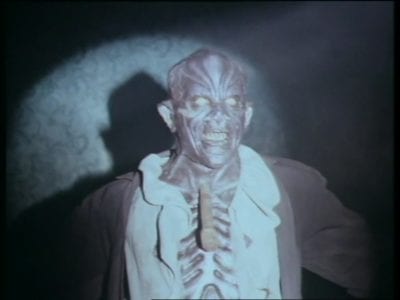
Chapter 5: Luna Llena
When the heliotrope starts growing among rough rocks,
And the full moon shines at night,
In a certain area of the earth,
A man turns into a wolf.
–The Fury of the Wolfman (1972)
Unlike the Howling series, the Hombre Lobo series is substantially the work and passion of one man, Paul Naschy, also known as the “Spanish Lon Chaney” because of his appearance in dozens of movies as almost every classic monster. Hombre Lobo movies are typically unrelated in plot, time or location but all are related by the appears of Naschy’s werewolf, Count Waldemar Daninsky. Beyond that, all the movies share a similar style, even across the decades from 1968’s Mark of the Wolfman to 2004’s Tomb of the Werewolf. Even fifty years apart the films have the same low-budget, broadly-played sense of style that is both endearing and risible.
Besides the Daninsky character the films share certain elements throughout the series. The most consistent theme is the vulnerability of the wolf only to weapons wielded by a woman that loves them, most times a silver dagger or a silver bullet. It’s a piece of mythology lifted directly from Werewolf of London, which features the same restriction. The rule is stated best in the fourth film of the series, The Fury of the Wolfman from 1972: “It’s impossible to go on. I (Daninsky) have to be destroyed either by another beast or at the hand of a woman who loves me enough to kill me using a silver bullet. She must put that bullet through my heart.”
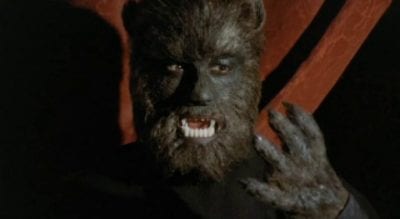
Not every one of the twelve Hombre Lobo films is a winner (technically eleven, as one is a lost film). Some are not so-bad-they-are-good, they are just so-bad. But if you can only watch one film in the series, I’d definitely recommend The Return of Walpurgis a.k.a. Curse of the Devil (1973). It has everything and the lycanthropic kitchen sink. Firstly, silver shotgun shells are used, my own personal favorite weapon in all of werewolfdom. Daninsky is cursed by a satanic coven who summons the devil during a black mass and is given a wolf skull which is used to pierce Daninsky’s chest, when seduced by a beautiful witch, giving him the mark of the pentagram. The witch that curses him, is Countess Bathory, who, though a witch in this movie, appears as a vampire opponent in another great movie in the series, Walpurgis Night a.k.a. The Werewolf vs. Vampire Woman (1971).
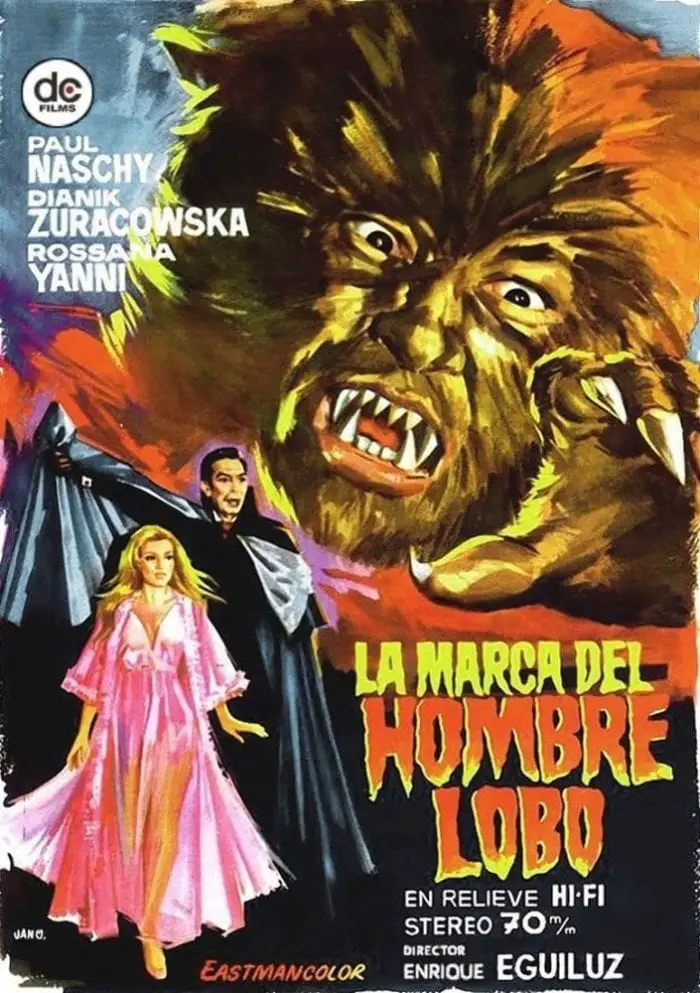
Chapter 9: Hi-Ho, Silver
A werewolf can only be killed by a silver bullet, or a silver knife, or a stick with a silver handle.
–The Wolf Man (1941)
Silver, in the mind of the ancient alchemists, was tied to the moon, and the moon, as we’ve discussed in prior chapters, is tied to the werewolf. The alchemical name for silver was ‘luna’ and the symbol was a crescent moon. It was associated with the feminine and with purity. This tradition has seeped into werewolf lore. As early as 1767, Jean Chastel killed the werewolf of Gevaudan with two silver bullets melted from a holy medal of the Virgin, as succinct an image of purification and femininity in association with silver as one can find. The Wolf Man mentioned silver bullets among other effective weapons, but bullets are used to kill for the first time in House of Frankenstein.
Sometimes it can be just any silver, sometimes the silver must come from a special source, like the silver chalices in Howling VI or blessed crosses in The Curse of the Werewolf (1961), which features a detailed, close-up scene of crafting the bullets. Silver can be used to detect a werewolf. In Wes Craven’s Cursed (2005) a stainless steel frame is confused for silver, which allows the werewolf to escape detection, and in The Beast Must Die (1974) silver candlesticks are used for the same purpose, with the hunter requiring each person in the house to grasp a stick. The Hombre Lobo film, Return of the Wolfman (1980), features a silver cross/knife that can repel both the werewolf and the vampire nemesis.
One of my own favorite scenes in a werewolf movie is one that takes place at the gunsmith shop. Silver Bullet (1985), appropriately features a very effective one, with the gunsmith holding up a bullet proudly declaring it the best work he ever did. The Howling novel by Gary Bradner, the basis for the film of the same name, as well as The Howling IV (1988), features a very similar scene in which the gunsmith and the hunter discuss specifics of crafting the bullets, including a prior scene of the main character buying silver bullion to melt.
The pilot for the short-lived television series Werewolf (1987) has a near-identical scene in which the gunsmith is handed a stack of silver coins. All three films, in these same scenes, make reference to the Lone Ranger, famous for his silver ammo, mainly as an explanation for why they want the bullets made. Interestingly, the Howling film adaptation removes the gunsmith and instead has the bullets procured from an occult bookstore that stocks them somehow. One of the more recent werewolf movies, and an excellent one at that, is Late Phases (2014), which uses the creation of silver bullets at the gunsmith as a pivotal plot point in uncovering the wolf.
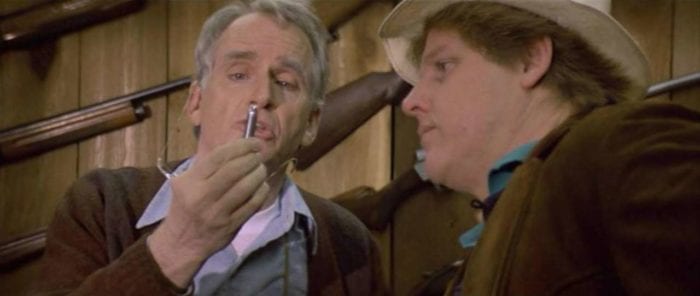
Chapter 10: The Wolfsbane Blooms
Oh, they’re nice as pie until they’ve had their way with you. But once the bloom is gone, the beast comes out.
–Company of Wolves (1984)
I wasn’t bit by a wolf or cursed by a gypsy. It just…happened. I picked some flowers for the vases in the church vestry one day last November. Up by that pretty little cemetery on Sunshine Hill. I never saw such flowers before…and they were dead before I could get back to town. They turned black, every one. Perhaps that was when it started to happen. No reason to think so, exactly…but I do.
– Cycle of the Werewolf by Stephen King, the basis for the film Silver Bullet (1985)
There is nothing in all of werewolf mythology, from the movies to the books, to the folktales more unique and necessary to its identity than botany. The very first werewolf movie ever, lost now and simply titled The Werewolf (1913), was about a Navajo witch-woman, a person with an understanding of herbs and plants in a time before botanical sciences, using that knowledge to transform into the wolf for revenge. The first major adaptation of the werewolf is Werewolf of London, which we have discussed in prior chapters. The plot involves multiple botanists, including the main character, attacked while on an expedition in Tibet looking for rare plants. For the remainder of the movie we get beautiful shots of the mysterious ‘mariphasa’ growing in a lab under what look like repurposed ray guns. The Wolf Man doesn’t rely as heavily on plant lore but it does give us the famous poem that linked the transformation, not with the moon, but with a plant in bloom: wolfsbane.

House of Dracula stands apart from other werewolf films centered around plants. First in the manner of becoming a wolf. It’s blamed on skull pressure and self-hypnosis. Larry Talbot, the Wolf Man, seeks out a Dr. Edelmann, who is alleged to have found a cure using mold extracted from a rare tropical flower called the ‘Vivaria Formosa’ which roughly translates to Taiwanese greenhouse. And in fact, several scenes of the movie are shots of mysterious plants growing in the lab. The cure is effected by using the mold to soften Talbot’s skull until the brain swelling no longer causes him to turn. If it weren’t for the presence of Lon Chaney Jr. it would be difficult to consider this movie in the mainline of werewolf films.
Wolfsbane (aconitum) grows in the mountainous areas of Europe and was traditionally used as both a medicine and a poison, depending on the dose. Just plucking the plant can kill a human being. It was often placed in meat left outside in order to poison and kill wolves. This historical and medicinal relation led to the plant’s association with werewolf lore as an effective way of combating the wolf. Not only is it believed to repel or kill the werewolf, keeping it close at hand can prevent a person from turning. Wolfsbane plays a major role in the Ginger Snaps films. A serum developed from dried wolfsbane, for some reason sold at a local craft store, is injected in order to prevent the turn.”Scarlet Cinema” (1989) is an episode of the television series Friday the 13th and features a cursed camera that turns its user into a werewolf with heavy use of wolfsbane throughout the plot. The Beast Must Die, not a stellar film otherwise, does have a greenhouse where the main character grows wolfsbane.
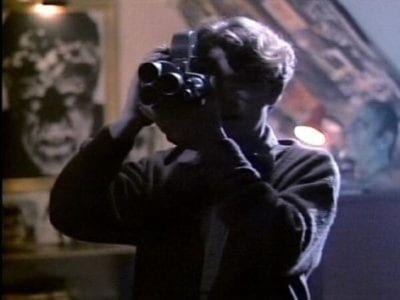
Often the use of flowers is simply evocative instead of impacting the plot. For example, in the Hombre Lobo film, Mark of the Wolfman (1968) we first find the werewolf in a crypt with a silver dagger in his heart and covered in wildflowers.
Chapter 13: Mark of the Beast
Both The Wolf Man and Frankenstein Meets the Wolf Man were written by screenwriter Curt Siodmak, a refugee from Nazi persecution, who is on record stating that he saw himself as a Jew in the monster he created. It contributed to the Wolf Man’s sense of being cursed and afflicted, hunted by everyone, and hated for something he could not control. The most obvious manifestation of this legacy is something now inseparable from the werewolf legend but essentially created by Siodmak in the Universal pictures: the mark of the pentagram, an obvious echo of the Star of David by which Jews, like Siodmak, were marked in Nazi Europe. Its use is pervasive throughout his films. The Wolf Man features it not only on Talbot’s palm but also on the silver cane used to kill him.
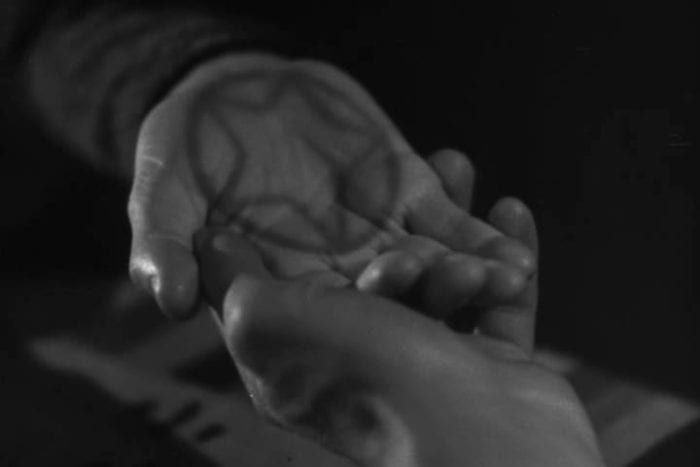
The Hombre Lobo films make heavy use of the mark in several movies, including naming a film in the series after it (Mark of the Wolfman), though it’s depicted on the chest instead of it’s original and more typical placement on the palm. In An American Werewolf in London, we also see the pentagram, painted in red on a pub wall in a sort of protective altar. In Waxwork (1988) a section of the film takes place in the werewolf exhibit, which acts as a portal to a cabin in the woods being attacked by a werewolf. The werewolf before it turns wears a pentagram on a chain.
The Werewolf television series has a red pentagram appear on the palm of the werewolf’s hand when the change is near, the star begins to bleed when the change is imminent. The only pieces of The Werewolf of Washington (1973) worth remembering are the fact that the killings are made in a pentagram pattern that references the esoteric city-planning of Washington, D.C., both echoed by the pentagram on the werewolf’s palm (in an early role of Dean Stockwell). Cursed is a more recent film to feature pentagrams on the palm, though even that can’t save this train wreck of a movie.
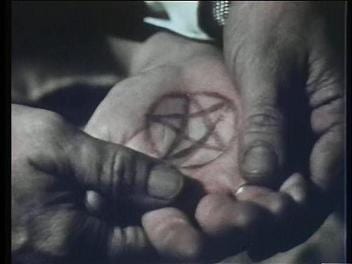
The connection between the werewolf in film and anti-semitism through Siodmak actually places an unusual scene in An American Werewolf in London into context. Amidst all the carnage caused by the mutant-were-Nazis it’s easy to miss the menorah sitting over the fireplace, just to its right. Landis never calls attention to it, but we specifically see it destroyed by bullet spray from the machine guns. The message is clear, this is a family of Jewish persons being attacked by Nazis, and since this is a nightmare of the main character we can see this as a sublimation of the very same fear of persecution Siodmak placed in his Wolf Man.
In the decades since Siodmak’s creation, the pentagram has obviously been pulled far from any reference to persecution as he experienced it. Safe to say that the assumption in contemporary film is the pentagram signifies the satanic roots of lycanthropy, ideas inherited from the folktales that lay behind the genre. But I believe it’s important to keep that original experience in mind as we watch these movies. That sense of dehumanization, isolation, and lack of control over forces of history are a keystone to the tragic temperament of any great werewolf incarnation on the silver screen.

Appendix 1—The Oddballs
Some werewolf films are so strange they stand in a category of their own. I’d feel remiss if I didn’t point out at least a few that have their peculiar merits and I can’t help but think this list could provide an entertaining marathon movie experience:
- Werewolves on Wheels (1971)—Tarot Decks, deserts, satanic monasteries, black masses! When you jam together Easy Rider, The Ninth Gate, and Howling II, the resulting, entertaining mess would be Werewolves on Wheels.
- Wolfen (1981)—Ecologically-conscious, indigenous wolf-spirits hunt big-city developers Predator style, heat-signature vision and all.
- The Company of Wolves (1984)—Very heavy on the fairy-tale and Angela Landsbury aspects of the werewolf mythos. Seriously, this is a surprisingly good werewolf movie, which emphasizes the hirsute nature of wolves with warnings against men with unibrows and explaining that “the worst wolves are hairy on the inside.”
- Monster Dog (1984)—My personal favorite of this list. Directed by Claudio Fragasso, known most famously for directing Troll 2. But that’s not even the big draw here. That belongs to Alice Cooper’s starring role. We get not one, but two full-length music videos. Please, right now, search online for ‘Identity Crisis’ and enjoy.
- Brotherhood of the Wolf (2001)—I’m included this one against my will but it has so many defenders in werewolf fandom I felt forced to address it. It’s a loose retelling of the Beast of Gevaudan legend but it’s not a wolf story at all. It’s a werewolf movie as much as a giant lion in a mechanical exoskeleton is a werewolf. Not even a bit apologetic if I just spoiled that surprise for you.
Appendix 2
The Author’s Top Ten Personal Favorites – In Chronological Order
- Werewolf of London (1935)
- Return of Walpurgis a.k.a. Curse of the Devil (1973)
- Howling II: Your Sister is a Werewolf (1985)
- Silver Bullet (1985)
- Teen Wolf (1985)
- Monster Squad (1987)
- Friday the 13th: The Series, “Scarlet Cinema” (1989)
- Howling VI: The Freaks (1991)
- Bad Moon (1996)
- An American Werewolf in Paris (1997) (I can’t defend this one and don’t care—I love it.)




Did you go out of your way to pick the bad ones? At least Curse of the Werewolf and Ginger Snaps should be in a Top Ten, with at least a mention of Ginger Snaps II: Unleashed. And no mention of the Underworld series?
Did you go out of your way to pick the bad ones? At least Curse of the Werewolf and Ginger Snaps should be in a Top Ten, with at least a mention of Ginger Snaps II: Unleashed. And no mention of the Underworld series?